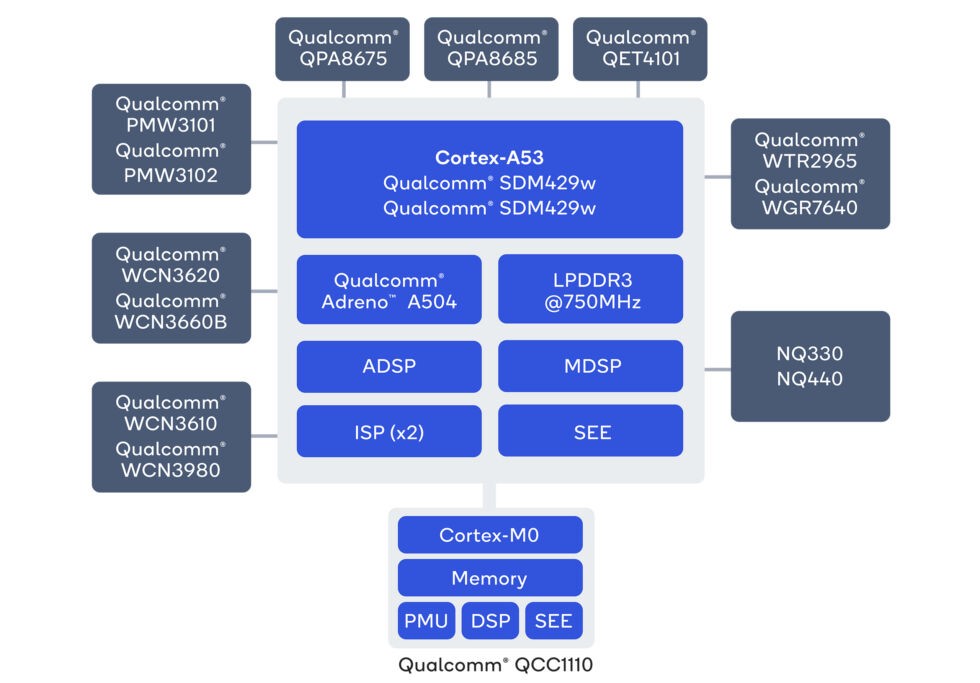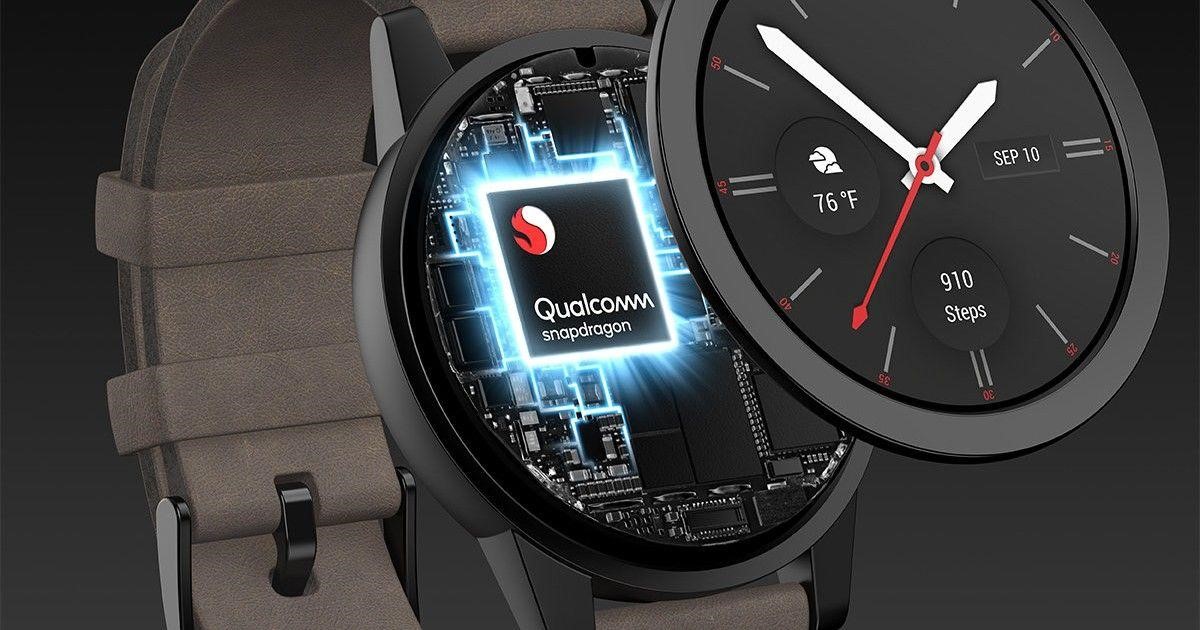After years of repackaging the same vital smartwatch chip over and over once again, Qualcomm has graced Wear OS with a modern-day smartwatch SoC. Satisfy the Snapdragon Wear 4100, a Qualcomm smartwatch chip that, for the first time, is much faster than the previous chip.
The Wear 4100 uses four 1.7 GHz Cortex A53 CPUs built on a 12nm manufacturing procedure, a significant upgrade from the 28nm Cortex A7s that every other Qualcomm smartwatch chip has been up until now. It’s not the advanced 7nm process that Qualcomm’s premium chip makes use of, and the Cortex A53 is an old CPU design, but for Qualcomm, it’s a significant upgrade. In between the new CPU, the Adreno 504 GPU, and also faster memory, Qualcomm is promising “85% faster efficiency” compared to the Wear 3100.
There are two variations of the 4100, the vanilla “4100” as well as the “4100+.” The plus version is specifically for smartwatches with an always-on watch face. Like previous Wear SoCs, it comes with an extra low-power SoC (based around a Cortex-M0) to keep updated and log sensor information (like action counts). Qualcomm guarantees a better screen image top quality in this low-power mode, with even more colours and a smoother screen.
There are likewise double DSPs currently, which Qualcomm says are for “optimum work dividing, assistance for dynamic clock and also voltage scaling, Qualcomm Sensor Assisted Positioning PDR Wearables 2.0, reduced power location tracking assistance, and also an enhanced Bluetooth 5.0 design.” There are likewise dual ISPs with support for 16MP sensing units (on a smartwatch?). As usual, connection choices are plentiful, with onboard LTE, GPS, NFC, Wi-Fi 802.11 n, and Bluetooth 5.

Can Wear OS be renewed?
No, probably not, Qualcomm has been neglecting the smartwatch market for several years, and while Wear OS has most of its troubles, the sorry state of Android smartwatches today is mainly Qualcomm’s mistake.
It’s not that Qualcomm hasn’t been launching any smartwatch chips whatsoever– the firm has simply been spending as few resources as feasible by selling the same fundamental chip for six years. In 2014, the initial Wear OS (after that called Android Wear) smartwatches brought out a Snapdragon 400 SoC, which made use of 4 Cortex A7 CPUs and improved a 28nm process. In 2016, Qualcomm released the “Snapdragon Wear 2100,” yet it wasn’t much different from the previous chip, using four Cortex A7 CPUs as well as a 28nm process. In 2018, Qualcomm recycled the same basic layout again, introducing the “Snapdragon Wear 3100,” using four Cortex A7 CPUs and a 28nm manufacturing process. Qualcomm may point to small added features in each release, but the basics like CPU rate and power usage have not been boosted for six years.
After standing still for six years, is anything left of Wear OS? The absence of practical hardware has devastated the ecosystem. Several equipment producers– like Samsung, Huawei, and Asus– have walked away from the system. Wear OS’s market share is at-or-approaching solitary digits and is so reduced that it does not get independently called out in market share records any longer. Without hardware sales, programmers can’t validate building apps.
When it comes to Google, the business seems to have slowed down Wear OS development. For the initial few years of its life, (Android) Wear OS closely tracked the mainline Android launch, yet an Android ten update never arrived. The last colossal upgrade was Android 9 (which Wear OS calls system variation “H”) in 2018. Lately, Google has made some purchases supporting Wear OS that we have not seen the results of yet. In early 2019, it obtained an unidentified innovation and an R&D group from Fossil Group, the greatest Wear OS OEM, for $40 million. In late 2019, Google acquired Fitbit, a leader of fitness monitoring gizmos, for $2.1 billion. Fitbit wasn’t included with Wear OS, yet Google called the acquisition “an opportunity to invest a lot more in Wear OS, in addition, to present Made by Google wearable gadgets right into the marketplace.” They offer– Google’s fifth-largest ever before– is still winding its way with regulative approval.
It’s unclear that there is a community left to acquire Qualcomm’s brand-new chip. The company is typically all about promoting the makers it has lined up for these chip launches, but it could not price estimate or name-check a single significant OEM in its press release. The launch companion for the Wear 4100 is a company called “imoo,” the self-described “leading brand for youngster smartwatches.” The company states its next-generation “Z6 Ultra smartwatch” will undoubtedly introduce Qualcomm’s brand-new chip in the next 30 days.
